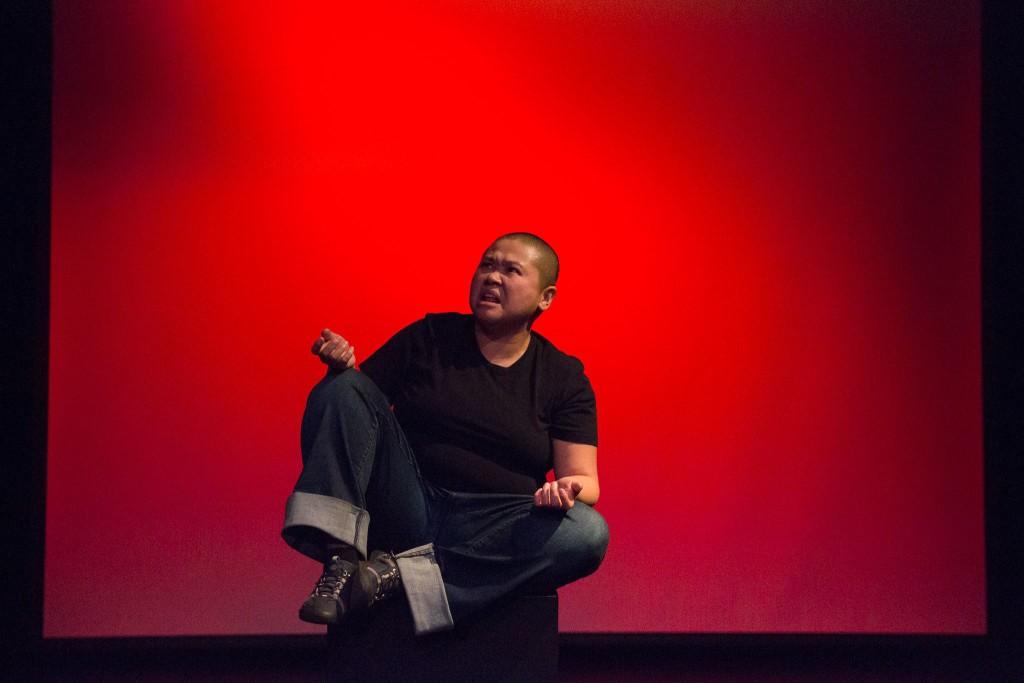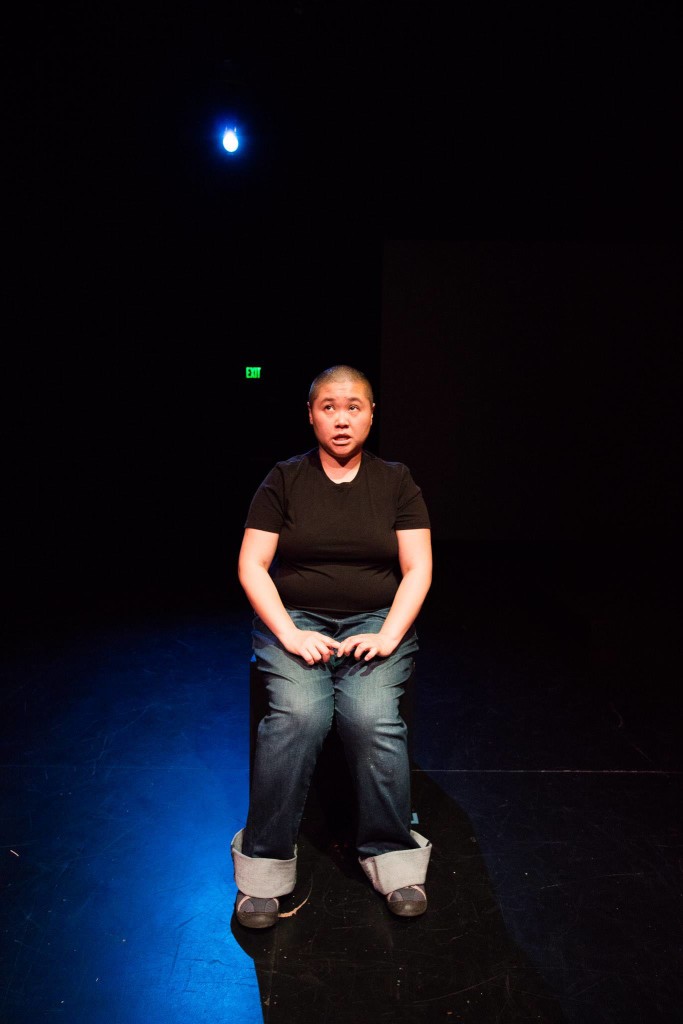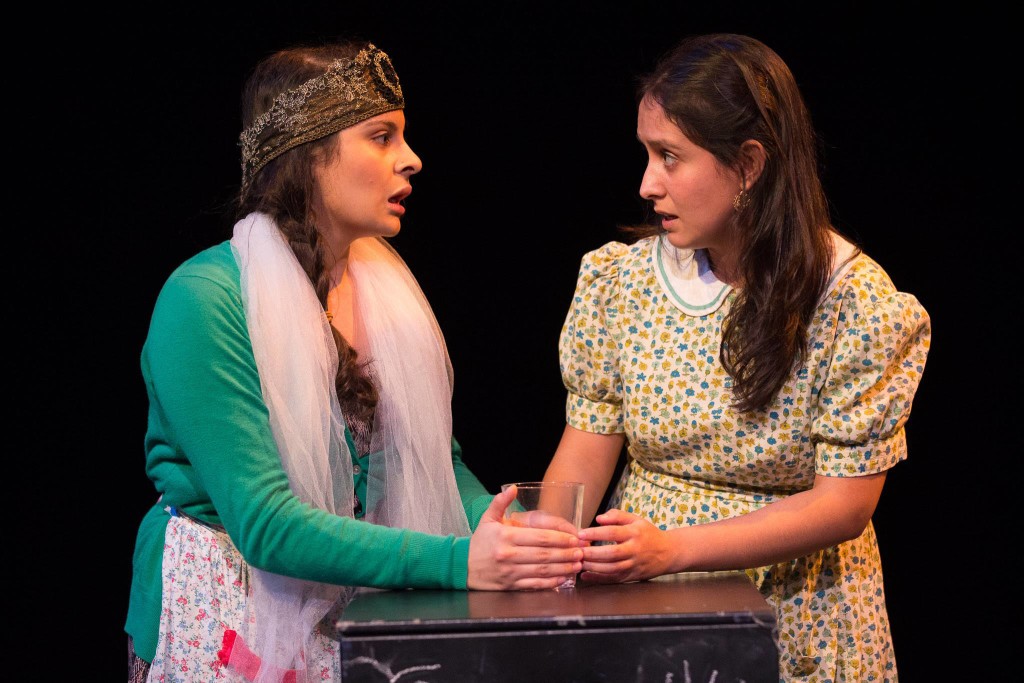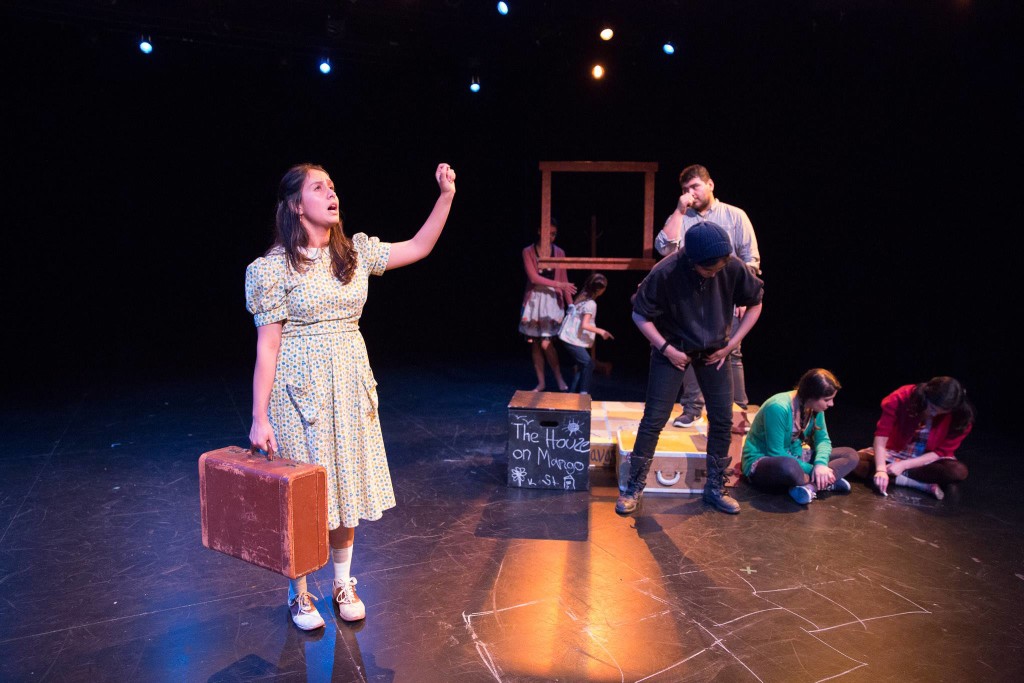 Last weekend marked the final two shows of the TAPS Grad Student Repertory theatre, an event that every second year grad student must participate in (it’s pretty much an exam).
Last weekend marked the final two shows of the TAPS Grad Student Repertory theatre, an event that every second year grad student must participate in (it’s pretty much an exam).
I entered the Nitery to the sound of mainstream pop music and the sight of a culturally appropriative montage of music videos—Katy Perry’s geisha fetishizations, Coldplay’s off-putting romanticization of India. The dissonance created between the jubilant pop music and the aggression of the barrage of these awful music videos, I knew that Thao Nguyen’s White Power: A Comedy, would not be afraid to tackle these issues head on.
From the get-go, Thao capitalized on these dissonances, starting her performance with a SNL digital short-esque prologue, in which a group of children (all played by Thao), choose superpowers. Conflict arises when one child keeps copying the other’s superpowers. When questioned as to why they were doing so, the child replies, “I’ve got white power,” using childhood play to illustrate how simple it is for white people to usurp other’s identities without consequence.
Thao’s (not Dao’s, as she points out in a vignette where she gets white-mansplained about how to pronounce her own name) one-woman performances were structured through a series of vignettes, jumping between her childhood and adult experiences. The adulthood scenes provided a contemporary critique of cultural appropriation and racism. In a particularly jarring plotline, Thao and her sister spotted a statue of the monk Budai being marketed as a Buddha sex toy. Magical realism ensued, and Thao ended up talking to Budai about the double standard of white people being culturally appropriative. If non-white people marketed Jesus as some anachronistic not-as-holy dude, white people would be up in arms. I heard mumbles of agreement from the audience. Thao was performing truths. I was getting angry at white capitalism.
But anger can produce only so much progress. In the second half of the show, Thao deconstructed the roots of her anger with a childhood perspective. Deftly switching between portraying her parents and her elementary school-aged self, she used the didacticism of a parent-child relationship as a means of showing what growing up Vietnamese in America was like.

Thao played out a parent/teacher/child conference, where the teacher lost patience with young Thao as she continually answered “I don’t know” to her questions, and the audience lost patience with the teacher when she keeps on pronouncing Nguyen, “N-Gueye-en”. Ms. Nguyen told the teacher to look beyond the “I don’t know;” what young Thao really wanted was someone to listen to her and help her. An empathetic ear.
Thao didn’t necessarily provide the audience with solutions to appropriation. The final scene showed a pre-teen Thao and her parent eating at a pho place. Thao began to notice a white woman ordering pho and modifying it in a way that it is not a Vietnamese dish anymore. Thao expressed her dismay to her parent, who responded, “At least they’re curious, at least they’re willing to try. You don’t remember how much they used to hate us,” as the lights dimmed.
Karina Gutiérrez’s direction of the Sandra Cisneros novel The House on Mango Street (stage adaptation by Amy Ludwig), brought the audience to the level of cultural curiosity that concluded Thao’s piece. The House on Mango Street tells of Esperanza’s (played by Luz Minerva Jiménez Ruvalcaba) Latina experience growing up in Chicago. Cisneros focuses on the details and tiny objects that define growing up, attributing meaning to what could be overlooked as the mundane—the cracking house, the abandoned car lot that became a monkey garden. Gutiérrez supplemented this theme by using an aesthetic of found objects—suitcases, umbrellas, old knick knacks—to give the feel that everything has a story on Mango street, and that every story is worth listening to.

Gutiérrez further created the vibrancy of Mango Street through the ensemble cast. The cast was consistently busy on stage with changing the found-object scenery, playing live Latin American music or multiple characters, and playing hand games concurrently with the main action. The world, found and imagined, of Mango Street enveloped around the audience. Though its scrappiness pushed Esperanza’s desire to leave and find better prospects, Mango Street ultimately proved to be home.
For those 55 minutes, the level of detail associated with each character allowed the audience to connect with them on an empathetic level. Take Sally, Esperanza’s fast friend who, revered for her makeup and stockings, crumbled to a dark place behind the makeup when we learned that she has been abused by her father. These details, both lighthearted and grim, make up the vibrancy of life. Esperanza must tell us all these details about Sally and others on Mango Street so that the audience can see the true, nuanced experiences of the neighborhood.

Both White Power: A Comedy and The House on Mango Street harness the full dimensionality storytelling has to offer, carving out narrative space for untold and personal experiences that otherwise would not be given space to do so. I hope Stanford theatre continues to let those spaces be carved out in the future, and that the Stanford community continues to listen.
